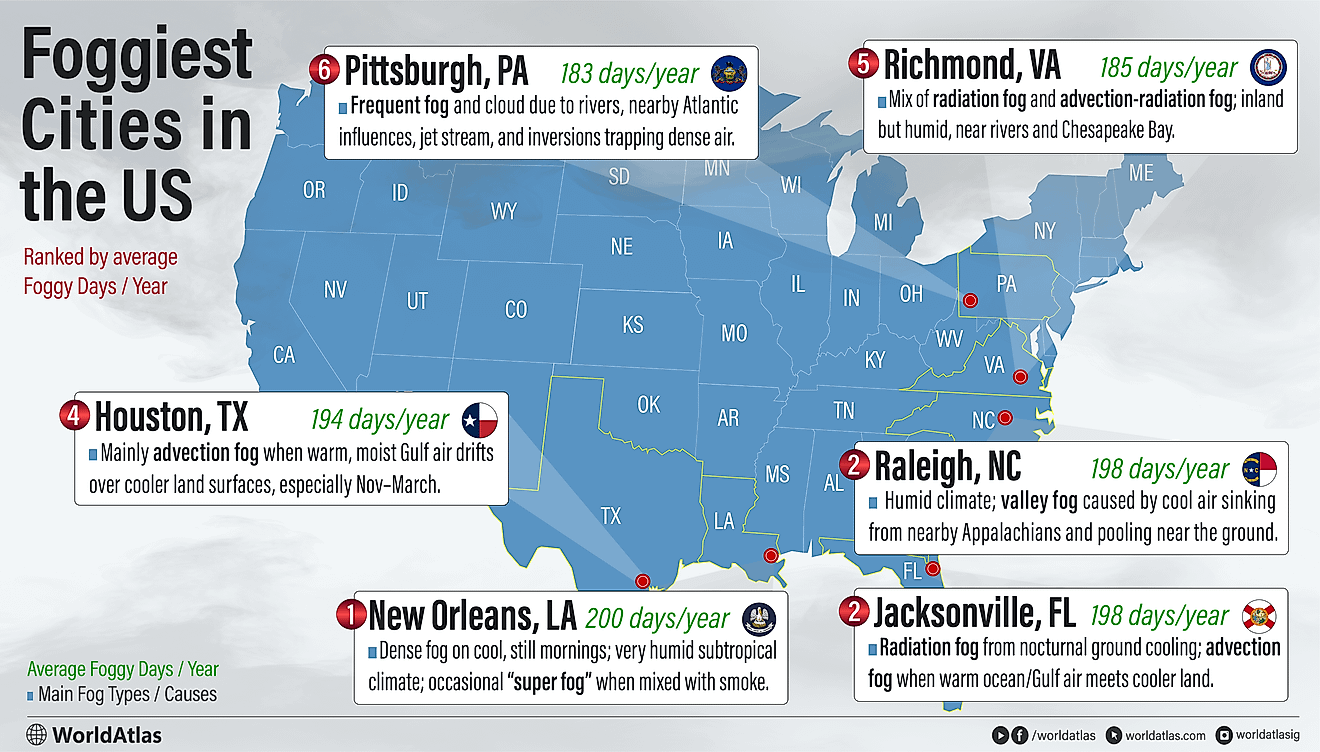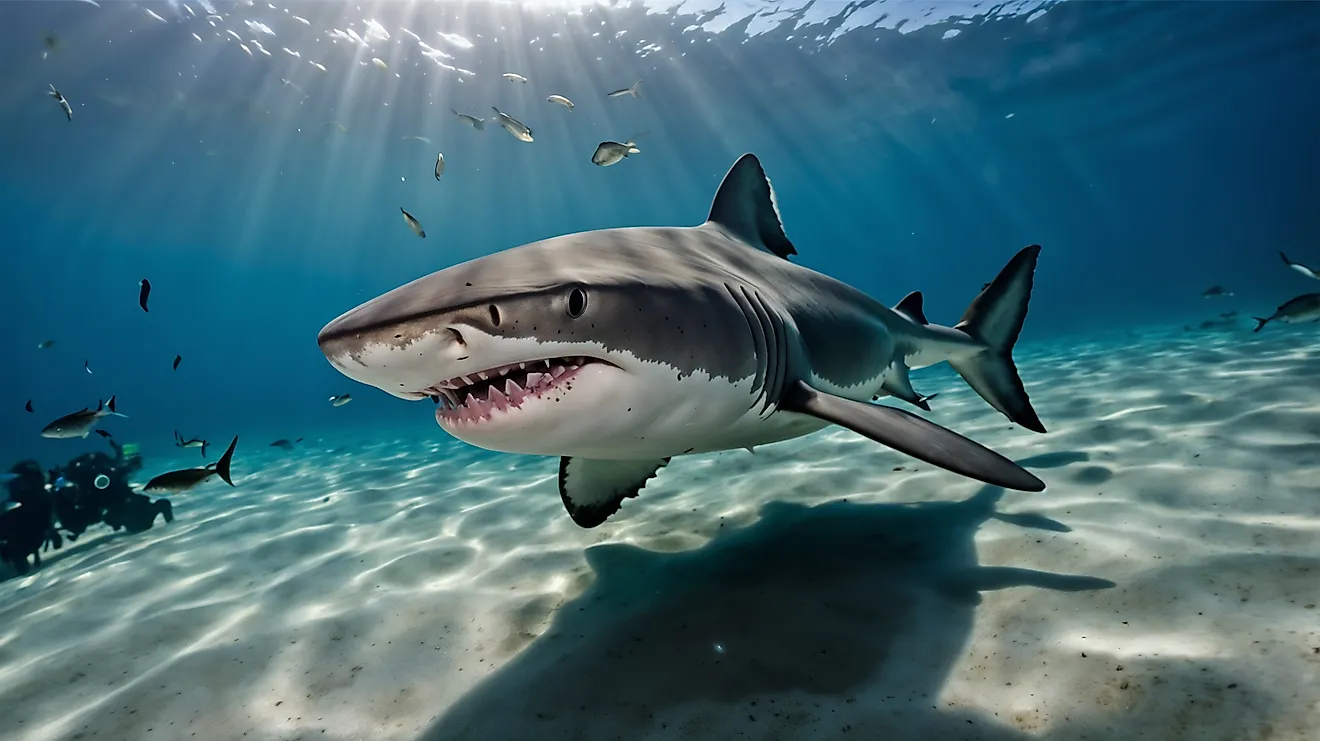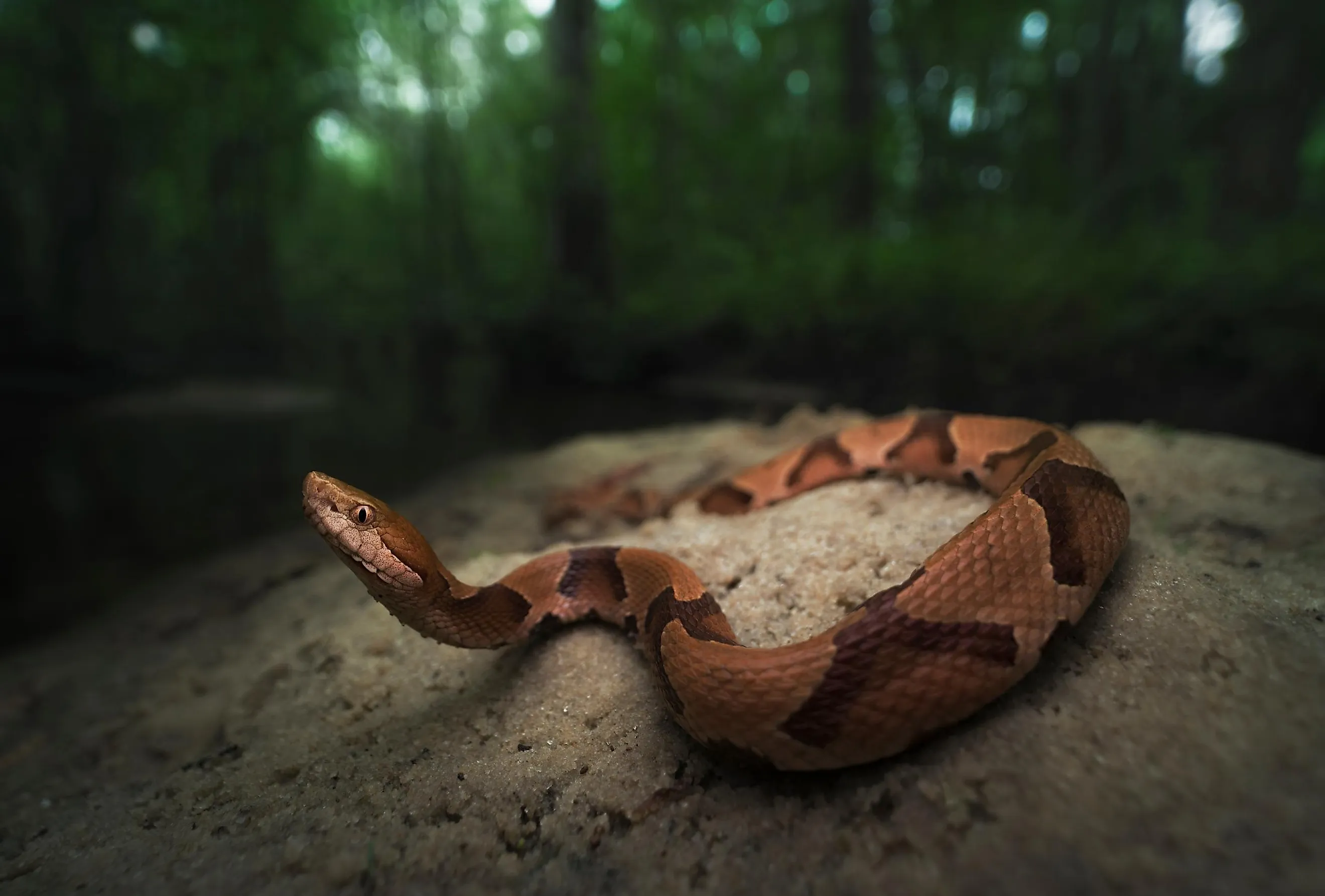
The 13 Deadliest Animals In Ohio
Simply put, the animal kingdom is a mixed bag of surprises! Mother Nature has bestowed upon different species daunting weapons with the potential to cause serious harm or even kill. Whether to defend against predators or to attack prey, humans should be wary of such animal encounters. Unfortunately, the Buckeye State is home to a number of these species, and interactions with them, especially for adventures in the wilderness, are not uncommon.
This article will explore the 13 deadliest animals in Ohio based on their ability or likelihood to harm humans. From poisonous snakes to large mammals, these are animals residents and visitors should take precautions around. By understanding their behaviors and knowing what to do in case of an unplanned encounter, you can enjoy the outdoors safely and respectfully coexist with native wildlife. So, before you get your hiking gear and slip into your trainers, here are some of the deadliest animals in Ohio to look out for.
Brown Recluse Spider
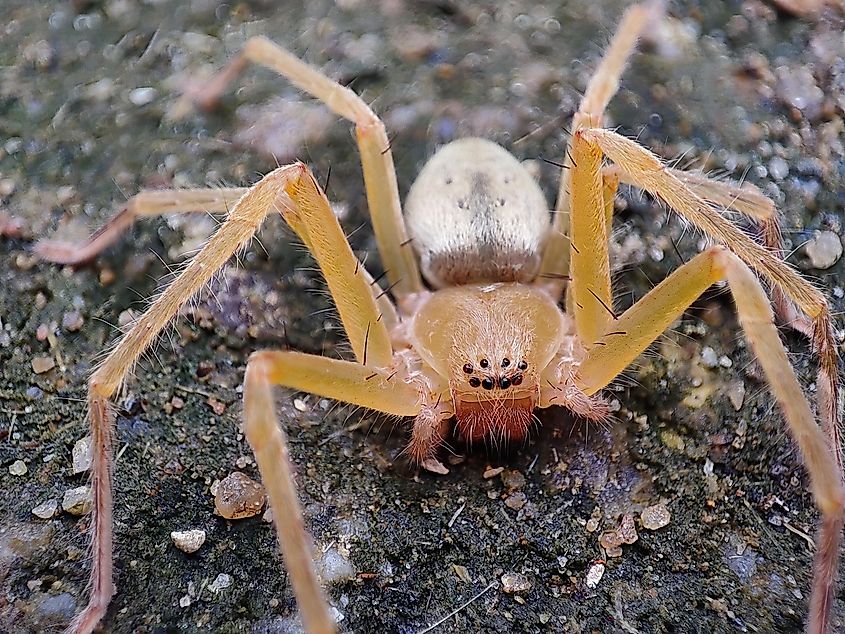
The brown recluse spider (Loxosceles reclusa), also known as fiddle back or violin spider, occurs in the southern and central states of America, extending to Mexico and South America. In Ohio, they are found indoors and outdoors, often in dark, undisturbed places, including sheds, woodpiles, and under rocks. The tendency to establish homes inside and around human settlements increases the likelihood of encounters. Recluse spiders are tiny insects, usually growing 6 to 20 mm long. Their color ranges from yellowish to grayish brown, with a small dark head and notably long legs.
Although small, these insects pack a venomous bite that may be painless at first, but end up causing symptoms like nausea, lesions, fever, and necrosis. Luckily, recluse bites are rare and they only attack when you push them. The only problem is that they resemble common house spiders when seen from a distance, and many fail to realize that they are handling a deadly species.
Copperhead
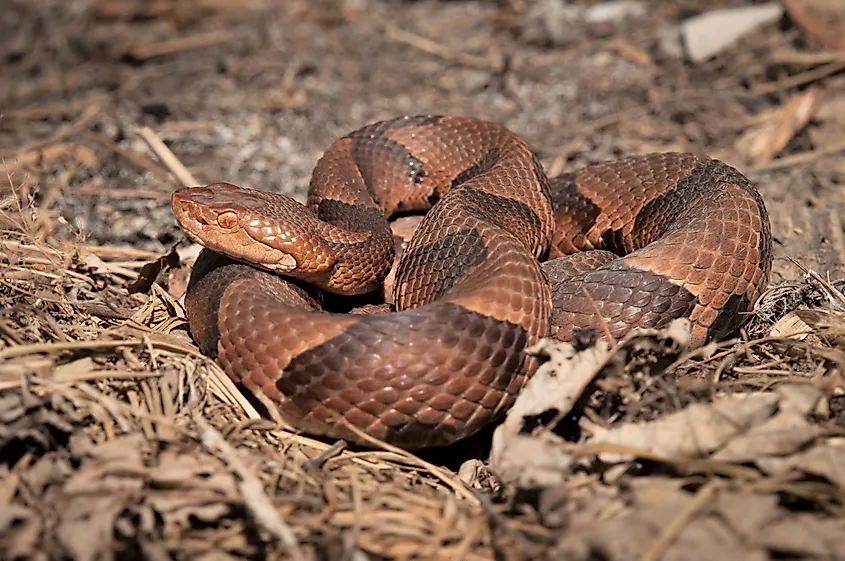
Copperheads (Agkistrodon contortrix) are a dangerous species occurring in the eastern United States, from Florida’s Panhandle to Nebraska and Massachusetts. They belong to the viper family and hunt prey by following their heat signature. In Ohio, you can find them in remote wildernesses but they can also spread to suburban locations. Copperheads typically grow 37 inches long. They have a stout body with a pale tan and sport distinct hourglass-like bands on their body. Their diet includes small animals like rats, mice, birds, frogs, and even smaller snakes. When they bite, these snakes inject a hemotoxin that works to destroy blood cells, although the venom is not as powerful as some venomous snakes.
Luckily, very few bites end up being deadly as copperheads tend to use dry bites as a warning. Encounters with humans are not unheard of, especially among adventurers in the backcountry. While they are not aggressive, they would not shy away from biting when under threat, so you best keep a safe distance in the event of an encounter.
Bobcat
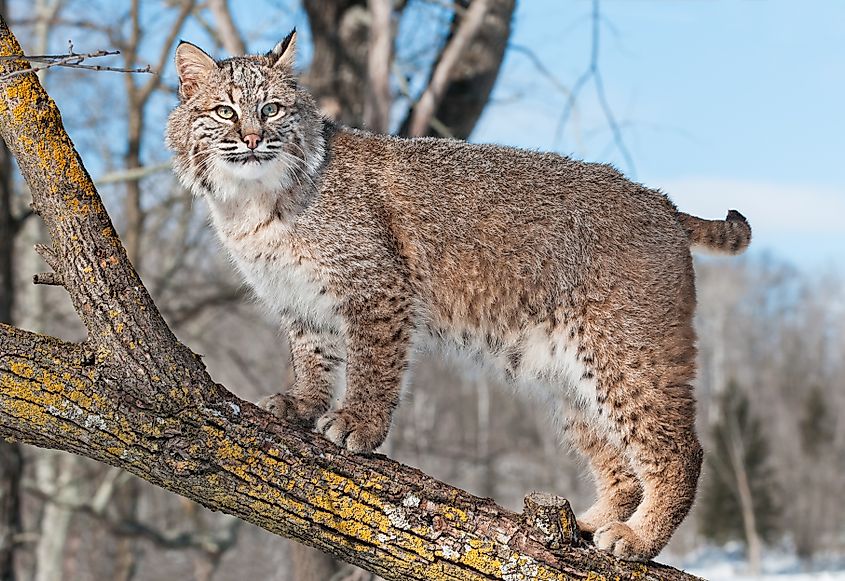
Although bobcats (Lynx rufus) were thought to be extinct in Ohio, they have made a comeback to claim their place among the most dangerous wild animals in the state. Most sightings have been made in south and southeast Ohio, confirmed through trail cameras and road-kill. Bobcats choose to stay along waterways and they are competent swimmers. They hunt small prey like mice, rats, and rabbits and rarely show interest in humans. However, they have been reported to stray into campgrounds and urban settlements, leading to encounters with humans.
Their sharp claws and teeth make them more than worthy adversaries and attacks, though occasional, will probably send you to the emergency room to prevent blood loss and possible infection. Luckily, fatalities are not common, so keep a safe distance from bobcats if you ever encounter them.
Timber Rattlesnake
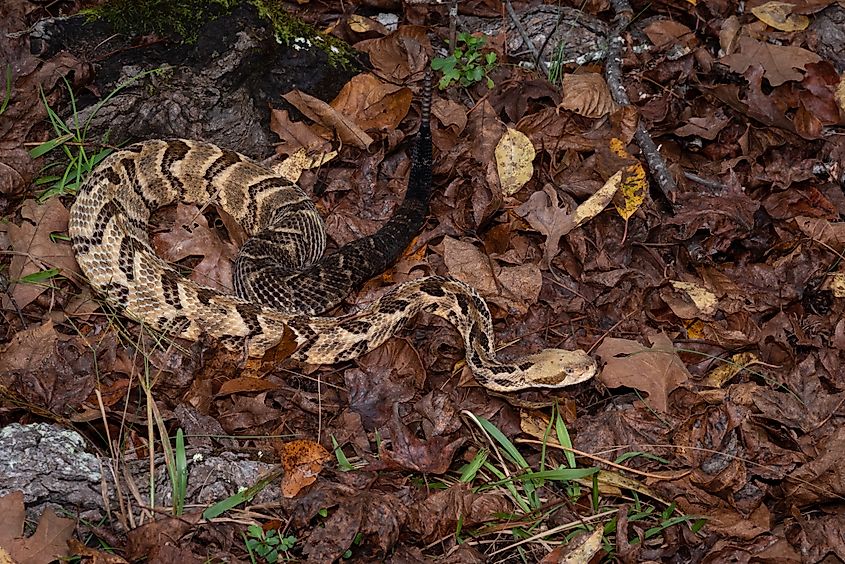
The timber rattlesnake (Crotalus horridus) is one of the three venomous snake species found in Ohio. They prefer wet habitats and can often be seen swimming and living around lakes, rivers, and fishing ponds, where they prey upon birds, frogs, mice, and smaller snakes. Despite this, the snakes are adaptable to other habitats, making them stay close to human dwellings. Adults reach 3 to 5 feet long and weigh up to 2 pounds, with the color varying from yellow-brown to black. Their ability to camouflage makes them ambush predators, often going unnoticed until the prey is within striking distance. Nevertheless, they will normally warn you by rattling their tails before unleashing their venomous bite.
Despite their dangerous reputation, timber rattlesnakes are docile creatures, and will only bite in self-defense. As a precaution, you should always remain on the lookout during hiking and camping expeditions in the wild. Give them a wide berth if you happen to encounter one.
Snapping Turtle
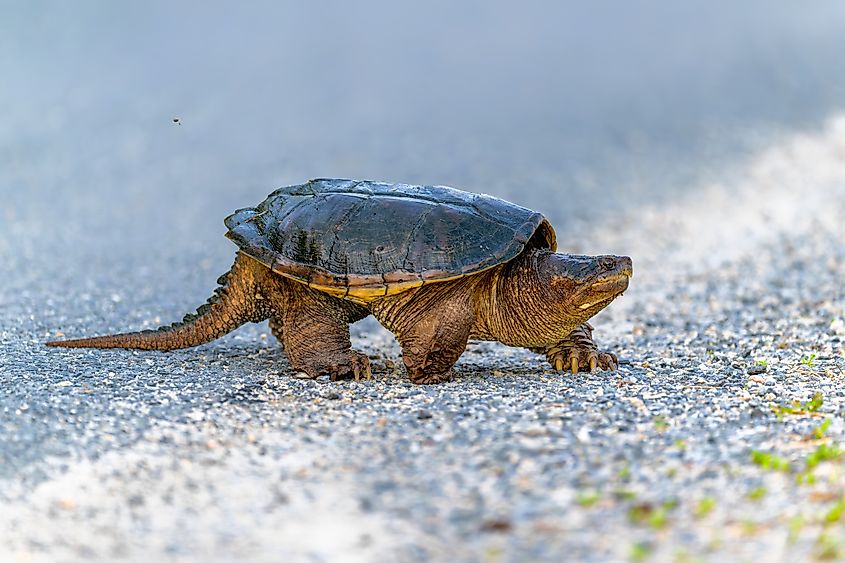
The snapping turtle (Chelydra serpentina) is a common sight in North America, occurring from southeastern Canada to Florida. They are native to Ohio, preferring slow-moving rivers, swamps, lakes, and ponds as a habitat, but will bask in the sun on logs and rocks. Growing up to 18 inches long and weighing 35 pounds as adults, these prehistoric-looking reptiles are distinguished by their elongated necks, long tails, and chunky heads. They appear slow and docile while feeding in the water, but snapping turtles can be deadly due to their powerful jaws and serrated beak, delivering a sharp and painful bite if threatened.
Though generally non-aggressive, they may feel compelled to defend themselves with their bite if humans get too close. Any wounds risk infection, complicating treatment. Most encounters happen during aquatic recreation. With care to avoid disturbing these turtles, the risk they pose is very low. Luckily, their populations continue to thrive in Ohio and they are not considered a threatened species.
Black Widow
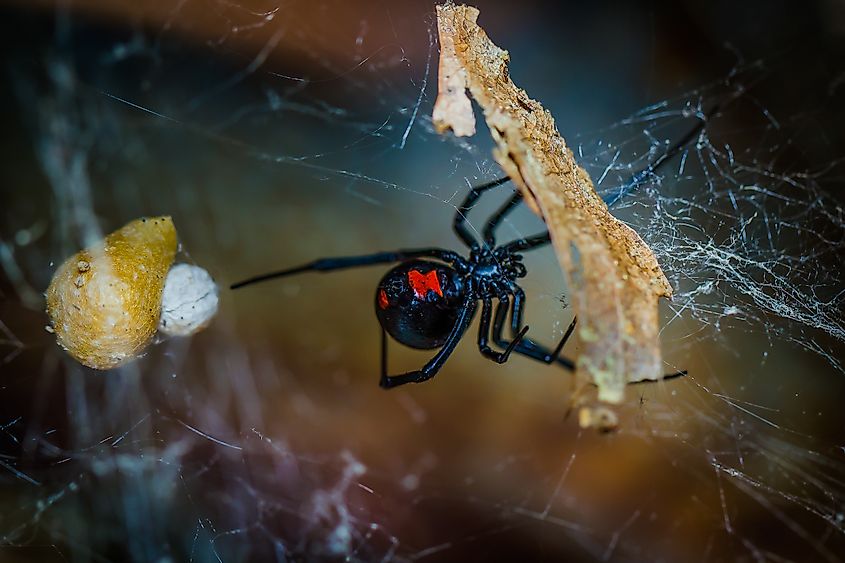
Ranked among the world’s most dangerous spiders, black widows (Lactrodectus mactans) are present throughout the Americas. In the United States, they are found in the Southern and Southwestern states, preferring quiet, dark places like under rocks, debris, garages, and outdoor structures for web-building. Their proximity to humans poses a toxic threat as they build nests near human dwellings. Readily identified by the conspicuous red hourglass mark on their otherwise jet-black abdomens, females can reach nearly 19mm in length, larger than males. While their size is diminutive, the potent neurotoxin in their bite is several times as lethal as a rattlesnake's.
Black widows are not inherently aggressive but will defensively bite only when feeling threatened. Bite symptoms can be severe, involving pain and ultimately complete nervous system shutdown when medical care is delayed. Death, though rare, can swiftly result from black widow bites. For safety, you should be wary of any spider webs in the home. Avoidance and caution are key, so call an exterminator when you have an infestation.
Wild Boar
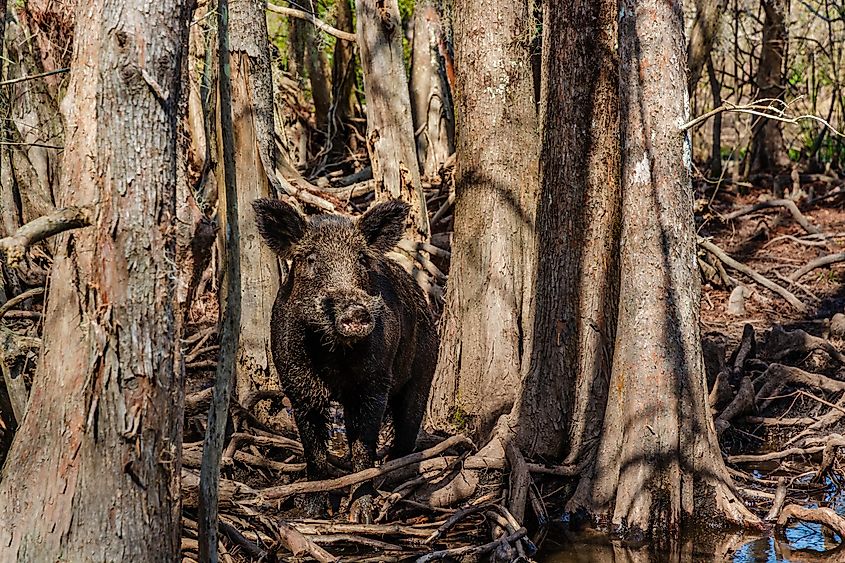
Wild boars (Sus crofa), sometimes referred to as feral hogs, are an invasive species that was introduced into North America. They are native to Africa, Europe, and Asia and their prolific nature has established thriving populations since landing in the country. Wild boars are omnivorous and have a far-reaching diet; they forage in farms and corn fields, resulting in constant conflict with farmers. Distinguished by their stout bodies on short legs and capable of reaching 600 pounds, boars have sizable tusk-bearing snouts and fearless dispositions, making them dangerous if cornered. They have been known to attack humans when under threat.
Whereas attacks are uncommon, their voracious damage to native habitats poses serious threats. Wise outdoor explorers give these formidable creatures a wide berth to avoid potential confrontations when exploring the wilderness they call home.
Eastern Massasauga
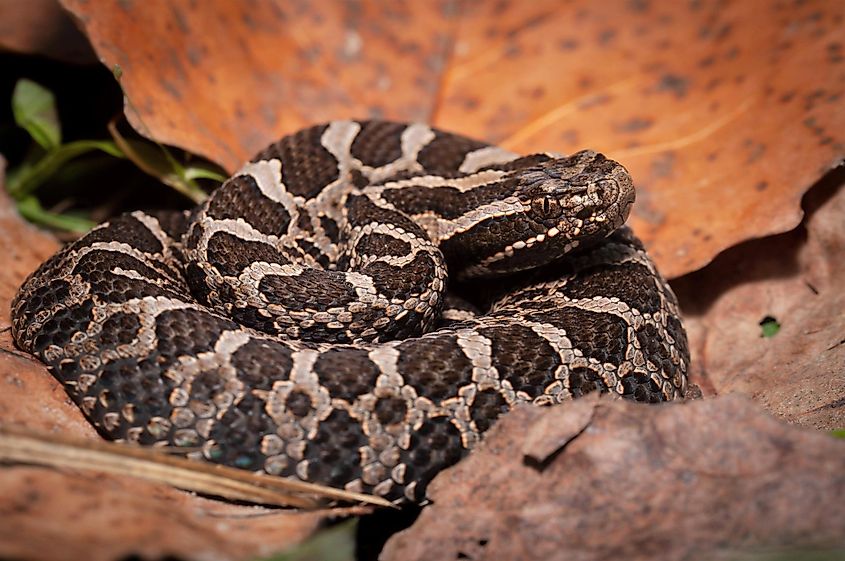
The diminutive but venomous eastern massasauga rattlesnake (Sistrurus catenatus) occupies wet regions of eastern and central North America, commonly in the Great Lakes region and stretching to the Midwest and Northeast. They prefer wet habitats, such as floodplain forests, swamps, lakes, and rivers, and move to drier land in summer. With a stout build and distinctive heart-shaped head, these snakes can reach two feet long. They possess a cytotoxin that they use to hunt rodents, lizards, and frogs. In humans, the venom disrupts blood flow and clotting through tissue damage.
Despite their venomous traits, eastern massasaugas are generally non-aggressive and their venom is not as deadly as other rattlesnakes. As an endangered species, they face ongoing threats like illegal hunting and human persecution. This underscores the importance of conserving their habitats to mitigate human-caused declines of the eastern massasauga.
Kissing Bug
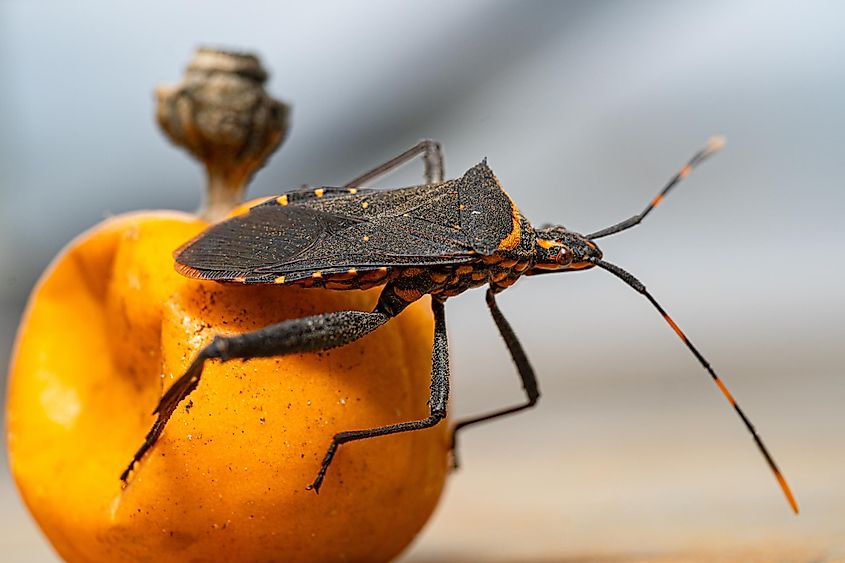
Kissing bugs (Triatomina sanguisuga) have habitats in Central and South America, with some appearing in Mexico and the Southern United States. They get their name from a habit of often biting victims on the face, particularly around the lips. These blood-sucking nocturnal critters are drawn to body heat and release a nasty-smelling pheromone as a defense mechanism. They carry a dangerous parasite called Trypanosoma cruzi, which causes Chagas disease, leading to symptoms like heart failure and stroke when left untreated.
Just like other small insects, kissing insects occur everywhere around human settlements and can find their way into your homes. The best way to keep them at bay is to sleep under a mosquito net and use insect-repellent products when venturing into the wilderness. With the symptoms they leave behind, kissing bugs are easily one of the deadliest animals in Ohio.
Black Legged Tick
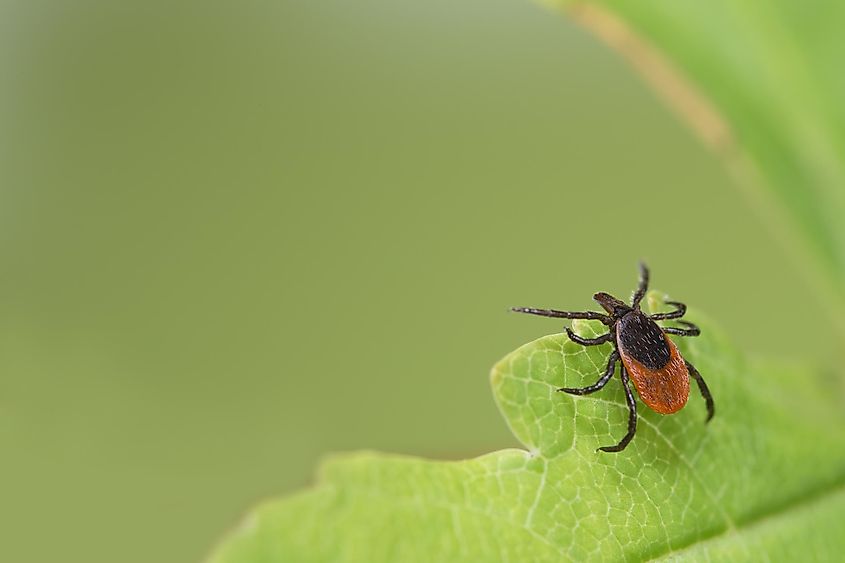
Despite their minuscule size, ticks (Ixodida) pose a serious health threat to humans, pets, and wildlife across the United States and Canada. Nationally, they are common in the Midwest, Northeast and Mid-Atlantic regions. These arachnid parasites thrive in grassy and wooded areas near human settlements. They await passing hosts to latch onto them and feed on their blood. Black-legged ticks transmit serious infections through their bites, including Lyme disease, babesiosis, and anaplasmosis. These parasites are mostly active in the spring and fall, but they remain so around the year when the climate is warm. Should you find one on your body, careful removal followed by washing the bite site with soap can help prevent diseases. Though small, ticks deserve caution for the outsized threat their bites may carry.
White-tailed Deer
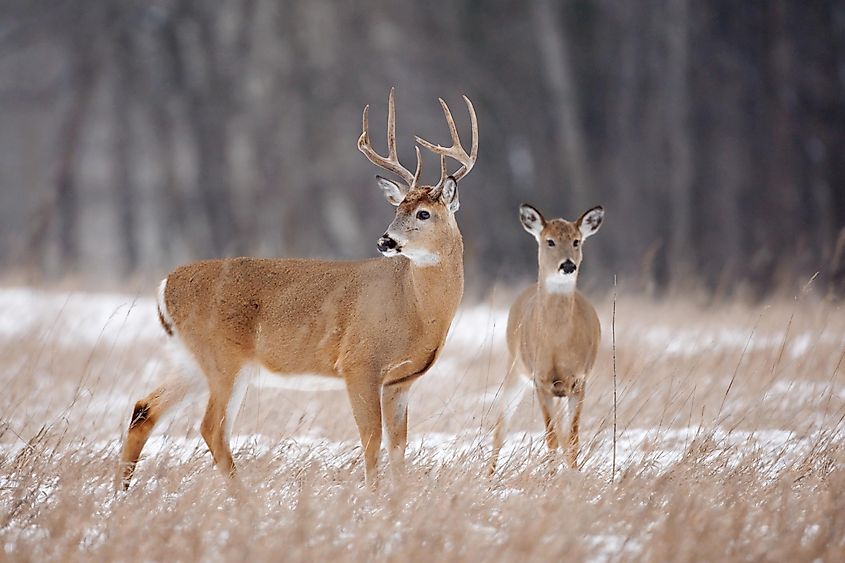
As far as looks go, white-tailed deer (Odocoileus virginianus) are far from dangerous. On the contrary, they look cute and behave gracefully, seeming approachable. Their threat doesn’t come from their bite or aggression, but their likelihood to cause road accidents. They are the most common deer species in North America and can be found throughout the Americas. White-tailed deer occupy diverse habitats, from grasslands and woodlands to forests, as long as there is pasture to graze. Males notably develop and shed massive antlers annually. Their tendency to bound across highways, especially at night, often without warning, creates an all-too-common accident hazard across the state.
While generally approachable, bucks may defend their territories during mating season by charging at trespassers with their sharp antlers. Aside from car incidents, dangerous interactions are otherwise rare. The best way to avoid their threat is to be vigilant and drive slowly in low-light conditions.
American Black Bear
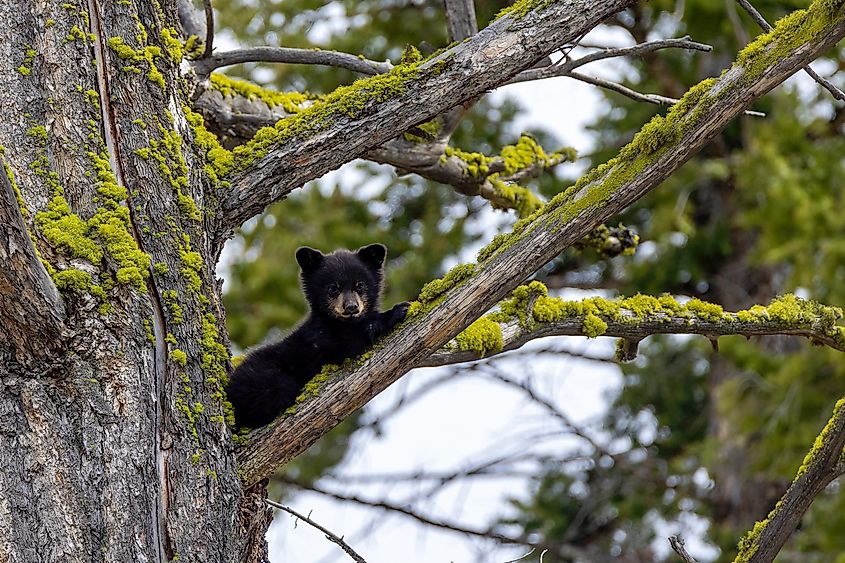
The black bear (Ursus americanus) represents one of the state's largest potential threats. However, excessive hunting and destruction of their habitat have driven a good population of black bears out of Ohio. Adults weigh up to 600 pounds and stand six feet tall, equipped with long claws, sizable canines, and powerful jaws needed for their omnivorous diet. Bears may frequent backyards in search of food, scavenging on birdfeeders or garbage. While generally shy of humans, a surprised or territorial bear possesses the means to seriously injure with claws and teeth if agitated.
Campers and hikers thus risk encounters on forest trails, with localized reports of confrontations. Though rare, defensive attacks do occur, with only one annual fatality reported across the country. At the end of the day, black bears are more afraid of humans that they are likely to intentionally charge at you. Respect and distance foster human and bear safety alike.
Fire Ant
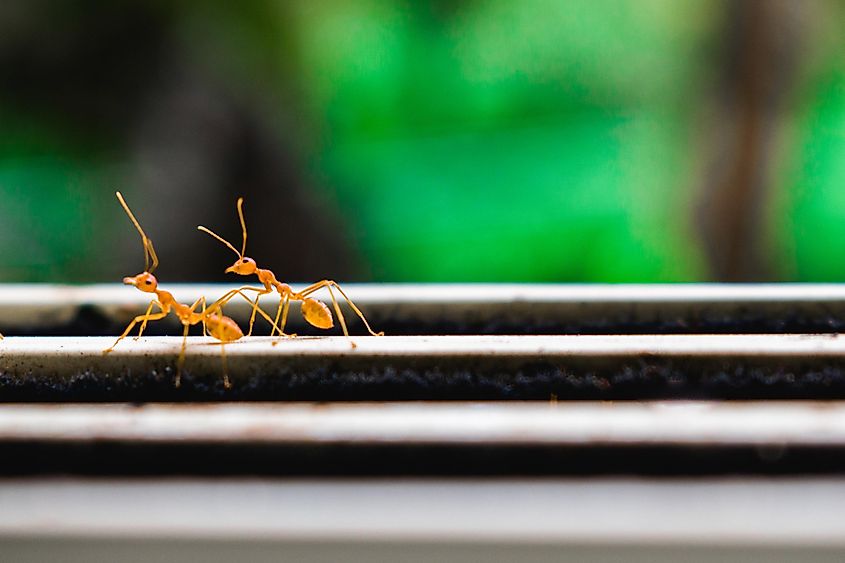
Different species of ants occur in Ohio, from the common carpenter ant to the more aggressive red imported fire ant (Solenopsis invicta). Varying in color from reddish-brown to crimson, their mounds tend to appear around human dwellings like in backyards. Fire ants are notorious for their excruciating stings, akin to a burn, and some victims experience dangerous allergic reactions. Their massive colonies comprised of thousands of ants feature distinct worker groups. When encountering their anthills near homes or in nature, it is wise to avoid them.
Fire ant stings are best prevented rather than endured. However, though menacing to humans, their ecological role as predators of pests such as ticks and cockroaches proves beneficial by reducing threats to people. With their population booms brought on by disturbed habitats, learning to coexist with these resilient insects is the best way forward.
Final Thoughts
While many of Ohio's native animals pose little threat and enrich the state's diverse ecosystems, some species demonstrated here have earned their dangerous reputations. From lethal snakes to aggressive bears, unwanted encounters with these top predators or carriers of illness require caution and awareness of risks. However, it is important to note that most interactions do not end in harm if proper precautions are taken. By understanding the habitat and behaviors of the deadliest animals in Ohio, residents and visitors can safely enjoy the natural wonders around them from a safe distance.










